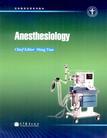Anesthesiology-麻醉学-英文版
2012-07-01
田鸣 高等教育出版社 (2012-07出版)
李树人
96
This book includes physiopathology, pharmacology, and clinical techniques related to anesthesia. It aims at introducing basic concepts of modern anesthesiology to all undergraduate medical students. We hope, by acquiring knowledge related to anesthesia, every student can master the major task of anesthesiology-relieving pain and monitoring and regulating vital signs, which could contribute to the study of medical students in all aspects.
Chapter 1 Preanesthetic Evaluation and Preparation 1.1 Introduction 1.2 Preanesthetic Evaluation 1.3 Anesthetic and Surgical Preparation Chapter 2 Regional Block Anesthesia 2.1 Introduction 2.2 Regional Anesthesia and Local Anesthetics 2.3 Peripheral Nerve Block 2.4 Intrathecal Anesthesia Chapter 3 General Anesthesia 3.1 Concept of General Anesthesia 3.2 Related Basic Knowledge 3.3 Management of General Anesthesia 3.4 Complications Chapter 4 Monitoring and Managements during Anesthesia 4.1 Introduction 4.2 Significance and Importance of Monitoring during and after Anesthesia 4. 3 The Basic Standard of Monitoring during Anesthesia 4.4 Contents of Cardiovascular System Monitoring 4. 5 Principles of Circulatory Disturbance Management 4.6 Monitoring Methods and Managements of Respiration during Anesthesia 4.7 Judgments and Managements of Anesthesia Depth 4.8 Commonly Used Monitoring of Body Temperature 4. 9 Monitoring and Managements during Recovery Period after Anesthesia Chapter 5 Fluid Management 5.1 Introduction 5.2 Monitoring of Fluid, Electrolytes and Osmolality 5.3 Principle to Treat Turbulence of Fluid Balance Chapter 6 Shock 6.1 Introduction 6.2 Classification of Shock 6.3 Hypovolemic Shock 6.4 Cardiogenic Shock 6.5 Distributive Shock 6.6 Obstructive Shock Chapter 7 Multiple Organ Dysfunction Syndrome 7.1 Introduction 7.2 Mechanisms of MODS 7.3 Definition of MODS 7.4 Management of MODS Chapter 8 Cardiopulmonary Resuscitation 8.1 The Concept of CPR and CPCR 8.2 Immediate Recognition and Activation of the Emergency Response System 8.3 Basic Life Support 8.4 Advanced Life Support 8.5 Post-resuscitation Treatment (PRT) Chapter 9 Nutritional Aspects 9.1 Introduction 9.2 Nutritional Requirements of Surgical Patients 9.3 Methods of Providing Nutrition Support 9.4 Nutritional Support in Special Situations Chapter 10 Pain Treatment 10.1 Introduction 10. 2 The Concept, Classification and Assessing of Pain 10. 3 The Body Responses of Pain 10.4 The Influence Factors of Pain 10. 5 The Common Methods of Pain Treatment
版权页: 插图: 1.3.2.5 Kidney With the improvement of medical technology,life expectancy of patients with terminal kidney dis-ease lengthens. These patients are often accompa-nied with other organic or systemic diseases, such ashypertension, arteriosclerosis, anemia, metabolicand endocrine disturbances. However, if combinedwith blood purificatory measures, such as hemodial-ysis, it is no longer a contraindication for electivesurgery. Postoperative renal dysfunction is one of themain causes of perioperative morbidity and mortali-ty. There are many risk factors affecting periopera-rive renal function, including preoperative decreasedrenal function reserve (e. g. the concomitance diabe-tes, hypertension, hypohepatia, etc. ), surgery-re-lated factors (aortic-clamping surgeries, extracorpo-real circulation, long-term surgeries, massive bloodloss, etc. ) and factors may cause kidney damageduring anesthesia and surgery (e. g. hypotension,hypovolemia and antibiotics, etc. ). Making certain of preoperative renal functionreserve, proper preoperative preparation and treat-ment, drawing up a plan for risk factors causing re-nal failure are essential for protecting renal functionand improving prognosis. 1.3.2.6 Endocrine system For patients accompanied with different endo-crine system disorders, the focus preoperative prep-aration is different with pathological and physiologi-cal features. For hyperthyroid patients, the keypoint of preoperative preparation is to prevent intra-operative and postoperative thyroid crisis. Anti-thy-roid drugs are usually administrated before surgeryto control the disease, and then use Lugol solution(compound iodine solution) for two weeks, so thatthyroid congestion and swelling can be lightened re-markably. Iodides and propranolol or esmolol can beused compatibly to prepare for the hyperthyroidism.For patients with Cushing's syndrome, it is vital tocorrect the fluid and electrolyte imbalance and theacid-base disturbance before anesthesia, especiallythe potassium supplement, control infection and hy-perglycemia and correct the negative nitrogen bal-ance. For patients with primary aldosteronism, spi-ronolactone or potassium can be applied before oper-ation to correct hypokalemia. For patients withpheochromocytoma, hypertension induced by exces-sive secretion of catecholamine should be controlledto the greatest extent before surgery. We should usea-receptor blockers to dilate blood vessels and applyfluid therapy to expand blood volume simultaneous-ly. For diabetic patients, preoperative fasting bloodglucose should be controlled below 7.7 mmol/L(140 mg/dL) and the maximum should not exceed12.9 mmol/L (198 mg/dL) because hyperglycaemiacan aggravate the cerebral ischemia causing the cere-bral lesion. Patients taking oral hypoglycemic drugspreviously should transfer to subcutaneous insulin orintravenous infusion of insulin before surgery. Forinsulin-dependent diabetic patients, operations cannot be performed unless the acetone bodies are con-trolled negative and the blood glucose is in normalrange, except for emergency surgeries.
《医学教育改革系列教材:Anesthesiology(英文)》由高等教育出版社出版。

Anesthesiology-麻醉学-英文版 PDF格式下载
就是拿来熟悉一下英文的